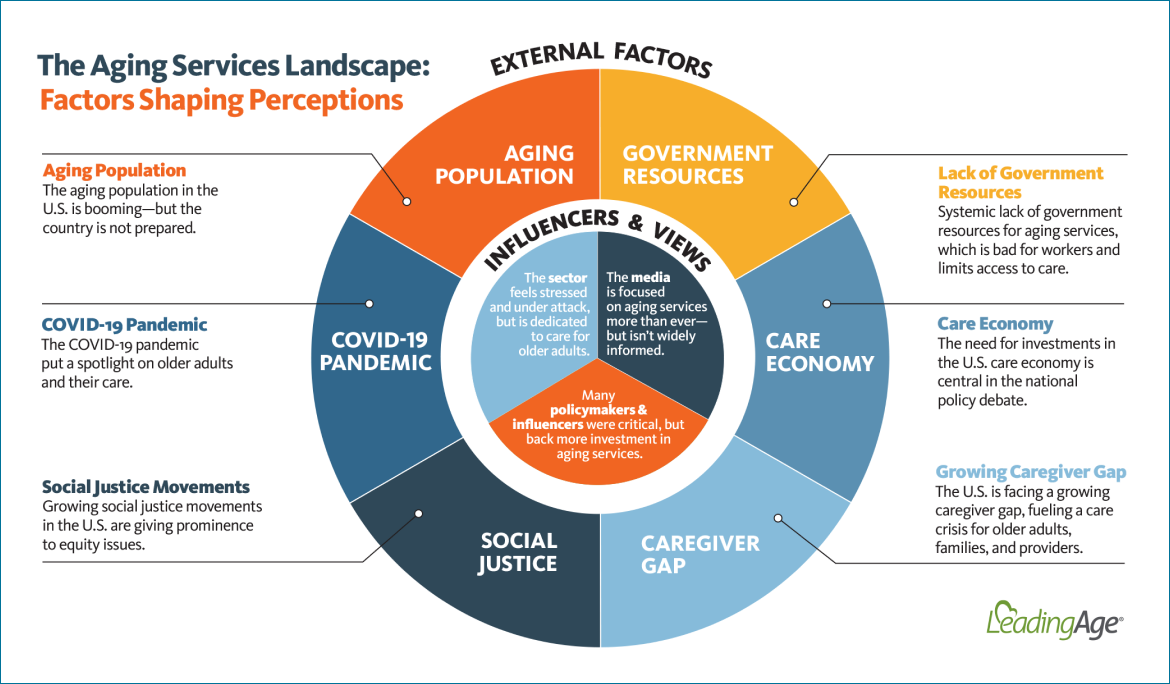- Research
- The Aging Services Landscape – Factors Shaping Perceptions
The Aging Services Landscape:
Factors Shaping Perceptions

The aging services landscape is a complex picture of a sector that is not well-understood by the general public, but it has the potential for meaningful public support, according to research.
Let’s start with a simple reality: we’re all growing older. In fact, the aging population in the United States is growing exponentially, and seven in ten older adults will need long-term care and services. At the same time, there’s an emerging gap between the number of available caregivers and the number required to meet the needs of older adults.
The country is wholly unprepared for these shifts, according to experts. By ignoring these issues for decades, policymakers have left us with a systemic lack of resources for aging services, and a complex web of disconnected services, regulations, and reimbursement formulas. The result? Too many older adults are unable to access or afford needed care and services; providers are unable to pay wages necessary to recruit and retain care professionals; and families are increasingly caught in unsustainable situations.
When the COVID-19 pandemic hit, older adults and the aging services they depend on bore the brunt of the unprecedented crisis, and public confidence faltered–especially about congregate care settings. While many policymakers and influencers were critical of aging services providers, such as nursing homes, during the height of the pandemic, academics and aging services experts agree that stories of “bad apple” providers receive disproportionate attention. They also agree that no part of our country’s healthcare sector was prepared for this kind of public health emergency.
Just as growing social justice movements in the United States gave prominence to equity issues, the COVID-19 pandemic put a national spotlight on older adults and their care, as well as on frontline caregivers in the aging services workforce. The voices of advocates have become stronger and care economy issues are front and center in the national policy debate.
With its coverage of these changes in the public discourse, the media has focused on aging services more than ever, despite being relatively uninformed about the sector. Researchers tracked news narratives that evolved from a focus on COVID deaths, outlier stories of abuse and neglect, and federal aid misdirected to profiteers, to the emotional impacts of isolation, heartwarming stories about reunions, and proposed investments in the care economy. While many influential voices remain critical of parts of the sector, nearly all support increased public investment in care and services for older adults.
To learn more about the research and detailed findings that inform this analysis, check out these resources:
Back to Research.
 Download this visualization
Download this visualization